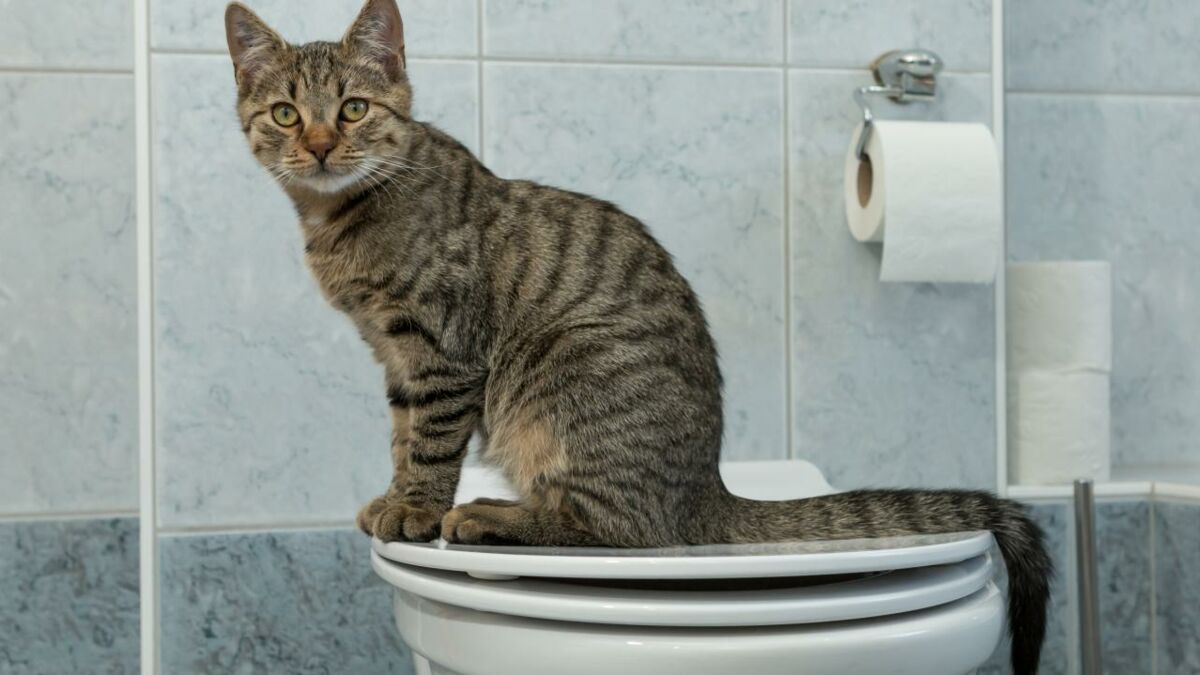Why Flushing Cat Poop Down Your Toilet Is Harmful - Tips for Proper Handling
Why Flushing Cat Poop Down Your Toilet Is Harmful - Tips for Proper Handling
Blog Article
We have unearthed the article pertaining to Don’t flush cat feces down the toilet listed below on the web and accepted it made good sense to share it with you in this article.

Intro
As pet cat owners, it's vital to be mindful of how we throw away our feline pals' waste. While it might appear practical to purge feline poop down the toilet, this method can have detrimental effects for both the environment and human health.
Alternatives to Flushing
Luckily, there are much safer and much more responsible ways to get rid of feline poop. Think about the complying with choices:
1. Scoop and Dispose in Trash
One of the most common technique of disposing of cat poop is to scoop it into an eco-friendly bag and throw it in the trash. Make sure to use a specialized clutter scoop and dispose of the waste promptly.
2. Use Biodegradable Litter
Go with biodegradable feline clutter made from materials such as corn or wheat. These litters are environmentally friendly and can be securely disposed of in the trash.
3. Hide in the Yard
If you have a yard, think about hiding cat waste in an assigned location far from veggie yards and water sources. Make sure to dig deep enough to avoid contamination of groundwater.
4. Install a Pet Waste Disposal System
Buy a pet waste disposal system specifically developed for feline waste. These systems use enzymes to break down the waste, minimizing odor and environmental influence.
Health and wellness Risks
In addition to ecological concerns, flushing feline waste can also present wellness risks to people. Cat feces may consist of Toxoplasma gondii, a bloodsucker that can trigger toxoplasmosis-- a potentially severe ailment, particularly for expecting women and individuals with weakened body immune systems.
Ecological Impact
Flushing cat poop presents harmful pathogens and bloodsuckers into the supply of water, positioning a significant risk to water communities. These pollutants can adversely impact marine life and concession water quality.
Final thought
Responsible pet dog possession prolongs past offering food and sanctuary-- it also entails proper waste management. By refraining from purging pet cat poop down the bathroom and going with alternative disposal methods, we can lessen our environmental impact and shield human wellness.
Why You Should Never Flush Cat Poop Down the Toilet
A rose by any other name might smell as sweet, but not all poop is created equal. Toilets, and our sewage systems, are designed for human excrement, not animal waste. It might seem like it couldn’t hurt to toss cat feces into the loo, but it’s not a good idea to flush cat poop in the toilet.
First and foremost, assuming your cat uses a litter box, any waste is going to have litter on it. And even the smallest amount of litter can wreak havoc on plumbing.
Over time, small amounts build up, filling up your septic system. Most litter sold today is clumping; it is made from a type of clay that hardens when it gets wet. Ever tried to scrape old clumps from the bottom of a litter box? You know just how cement-hard it can get!
Now imagine just a small clump of that stuck in your pipes. A simple de-clogger like Drano isn’t going to cut it. And that means it’s going to cost you big time to fix it.
Parasitic Contamination
Believe it or not, your healthy kitty may be harboring a nasty parasite. Only cats excrete Toxoplasma in their feces. Yet it rarely causes serious health issues in the cats that are infected. Most people will be fine too if infected. Only pregnant women and people with compromised immune systems are at risk. (If you’ve ever heard how women who are expecting are excused from litter cleaning duty, Toxoplasma is why.)
But other animals may have a problem if infected with the parasite. And human water treatment systems aren’t designed to handle it. As a result, the systems don’t remove the parasite before discharging wastewater into local waterways. Fish, shellfish, and other marine life — otters in particular — are susceptible to toxoplasma. If exposed, most will end up with brain damage and many will die.
Depending on the species of fish, they may end up on someone’s fish hook and, ultimately on someone’s dinner plate. If that someone has a chronic illness, they’re at risk.
Skip the Toilet Training
We know there are folks out there who like to toilet train their cats. And we give them props, it takes a lot of work. But thanks to the toxoplasma, it’s not a good idea.

I was guided to that editorial about How to Dispose of Cat Poop and Litter Without Plastic Bags through a friend on our other web property. Sharing is nice. One never knows, you might be helping someone out. We recognize the value of reading our article about How to Dispose of Cat Poop and Litter Without Plastic Bags.
Click Here To Find Out More Report this page